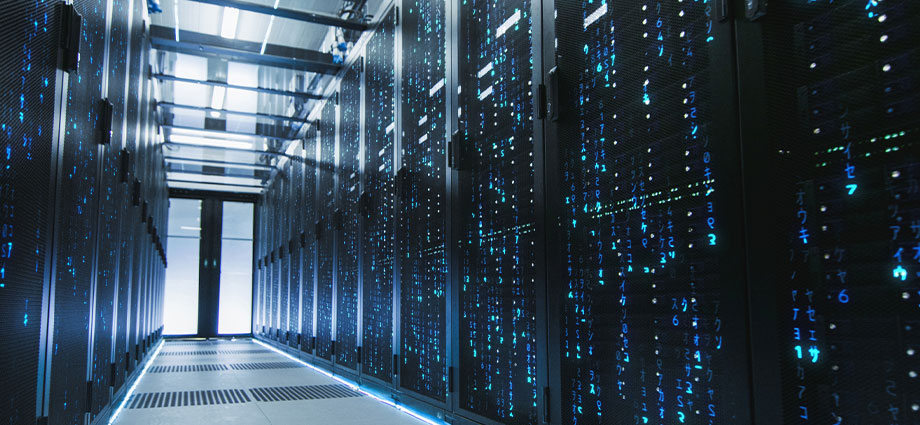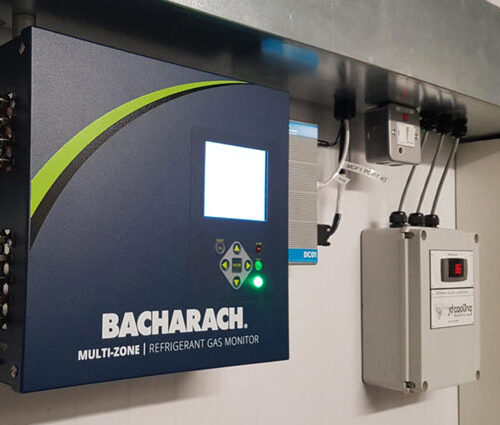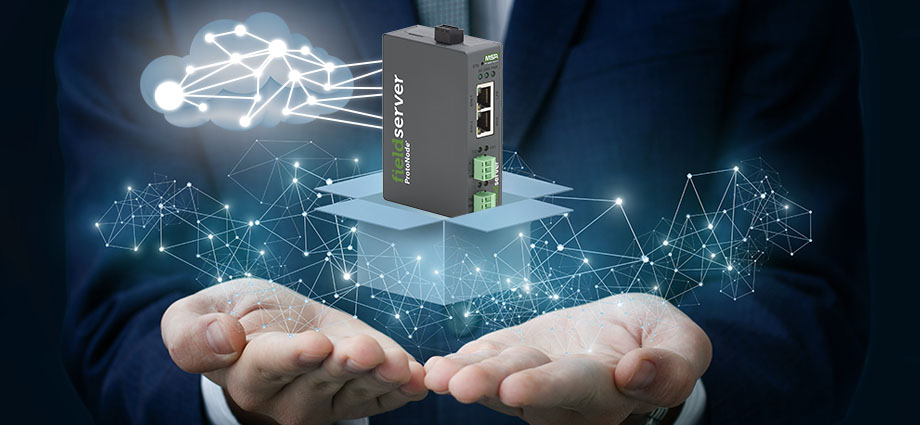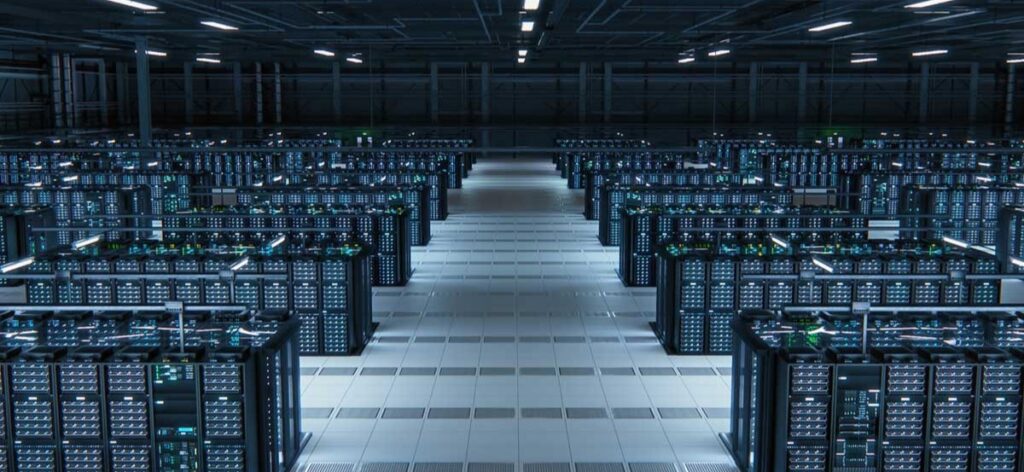
Refrigerant leaks have the potential to ruin high-value assets. Nowhere is this potentially more disastrous than within a data center’s infrastructure. Maintaining the uptime of servers, networking equipment, and backup power generator solutions is crucial for data centers, so that means maintaining control of conditions such as temperature and humidity, as well as ensuring that the data center environment remains leak-free.
As challenging as it is to keep data centers cooled and free of refrigerant leaks, there’s a trending technology that’s impacting data center operations: generative AI (artificial intelligence).
Without question, generative AI will continue to expand its reach across all areas of life and business—including data centers. In fact, data centers are expected to be among the most affected by AI. Why?
Because AI and its corresponding algorithms are creating a major cause-and-effect relationship that directly impacts data center operations:
- Increased data loads equate to higher levels of energy consumption.
- Higher levels of energy consumption demand an increased need for cooling.
Thanks to AI, the problem for data centers has become: How do you regulate temperature and humidity levels in a data center to ensure an optimal yet also leak-free environment?
If you’re looking for new ways to manage data center cooling and help stop cooling leaks safely and efficiently—and securely—keep reading to learn more.
How AI Is Increasing Energy Consumption in Data Centers
Because the U.S. is the world’s technology leader, it only makes sense that it ranks #1 when it comes to the number of data centers. In fact, according to Cloudscene, an independent directory of data centers and cloud services, the U.S. has five times more data centers than its nearest competitor, the United Kingdom.
Even more astounding is that the amount of electricity consumed by the 5,381 data centers found across the U.S., including Google, Facebook, and Uber, is staggering. In fact, the International Energy Agency (IEA) estimates that U.S. data centers consume as much as 1.5% of the world’s electricity—and that’s before adding AI models into the mix.
Further, Scientific American reports that researchers believe that data centers are on a fast path to consume even bigger amounts of electricity; as much as 85.4 terawatt-hours every month. That’s more than some small countries consume in an entire year!
3 Ways to Improve Energy Efficiency in a Data Center
Management consulting firm McKinsey & Company reports that 40 percent of a data center’s energy consumption comes from cooling. Consistent and efficient cooling is not only essential to data center operations, it’s critical to preventing servers from overheating and thereby preserving valuable uptime.
So, what is a data center operator to do? The answer, of course, is to reduce consumption and improve efficiency.
But how?
Here’s a look at three primary ways data centers can work to cut their energy consumption in the wake of the demand AI is putting on them.
1. Optimize Server Rack Layout
IBM is credited with developing the well-known “hot aisle/cold aisle” data center layout in which server racks face each other in alternating rows like this:
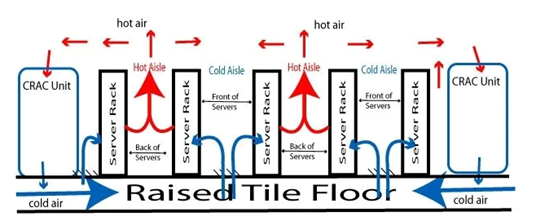
Though the design dates back to the early 1990s, it is still considered an extremely efficient way to organize server racks to prevent hot and cold air from mixing. This hot-cold mixing is a vicious cycle that can raise environmental temperature and require lowering the thermostat, which, in turn, consumes even more electricity.
The good news is that this time-honored server layout works to help reduce energy consumption. According to technology leader Siemens, the hot aisle/cold aisle layout for data center racks can result in chiller plant energy savings of 10% to 20% and up to 35% in overall savings.
2. Add Containment Systems
Containment systems are add-on physical barriers that work in conjunction with the hot-aisle/cold-aisle layout to further reduce the mixing of hot and cold air. The beauty of containment systems is that, according to EnergyStar.gov, they can help data centers reduce energy expenses by an additional 5% to 10%.
3. Maximize Chiller Operations
As you probably know, data center cooling systems are in the midst of some pretty big shifts, thanks to federal refrigerant regulations and emerging technologies, including new refrigerant options and liquid cooling systems.
Regardless of which type of cooling equipment you use in your data center, it’s important to ensure that your chiller systems are operating at peak efficiency as much as possible. This not only helps optimize cooling capabilities, in general, it’s one of the best ways to reduce energy consumption.
3 Critical Elements for Optimizing Data Center Cooling Systems
As of 2024, a majority of data centers are cooled using commercial refrigerant systems. Although technological advancements are helping improve the efficiency and safety of these systems, refrigerant leaks can and do occur. To ensure both safety and compliance, data cooling systems must be carefully monitored for leaks and regularly maintained.
Here are 3 critical elements that can help you ensure that your data center—even if it’s being taxed by complex AI algorithms—remains at optimal temperatures for reliable performance.
1. Refrigerant Leak Detection
Without question, refrigerant leaks pose significant risks. Because leaks are a make-or-break condition that can bring data center operations to a screeching halt, it’s essential to have the capability to rapidly detect and proactively respond to leaks.
MSA’s Bacharach® Multi-Zone refrigerant gas monitor provides the earliest level of detection for costly refrigerant gas leaks (down to 1 ppm). The large graphic LCD display and LED status indicators provide a system-wide overview at a glance. When paired with an industry-leading FieldServer protocol gateway, you can collect and analyze data from the device. This gives you the ability to identify refrigerant leak patterns and trends faster and easier.
If you decide to combine the gateway with MSA’s Parasense platform, you’ll have a simple yet powerful way to keep track of refrigerants across the enterprise. More importantly, you’ll have anytime access to contextual information and insights, so you can determine the validity of the leak alarm for appropriate response.
2. Real-Time Monitoring and Remote Notifications
Temperature, humidity, airflow, fan speed, refrigerant leak detection. Each of these things alone (and combined) are essential to keeping data center infrastructure operating as it should. Thanks to advanced technology-enabled solutions that include industrial refrigeration, a gateway device, and a secure Cloud application and/or DCIM (data center infrastructure management) software, it’s far easier and much more efficient to monitor and manage these and so much more.
With real-time monitoring, you can more quickly detect and proactively respond to any cooling or leak-related issue that could cause downtime. In addition, the right gateway solution lets you configure it for real-time email and SMS alerts and notifications. Because it also enables connection to both the Cloud and DCIM, you’ll be empowered to get ahead of unusual conditions and activity, such as refrigerant leaks.
3. Connected Data
A Cloud- or DCIM-connected solution provides a full suite of data capture, data analysis, and compliance reporting tools, too. This means you can better visualize, assess, and report on data across the enterprise.
In addition to helping you target poor-performing chillers or other equipment, a connected solution helps ensure seamless interoperability for data collection, processing, and dissemination at the edge.
The Future of Data Center Cooling
Technology trends, such AI, blockchain, and edge computing, are helping data centers be more agile and responsive to their customers. Along with them, however, come changing workloads and increased demand, resulting in an even greater need to reduce energy consumption, optimize cooling efficiency, and ensure reliable operation of critical systems.
Using a protocol gateway like FieldServer can help data centers:
- Support regulatory compliance.
- Reduce system downtime.
- Identify leak patterns to reduce refrigerant use and emissions.
- Improve performance.
- Decrease energy consumption and operational costs.
- Support environmental sustainability goals.
Are you ready to implement or enhance your data center’s cooling systems and connectivity solutions to improve the reliability, efficiency, and safety of your cooling infrastructure; simplify system management; and deliver valuable insights? Then get in touch with us today.
In the meantime, please check out these additional resources on the topics of AI, edge computing, leak detection, and data center cooling:



